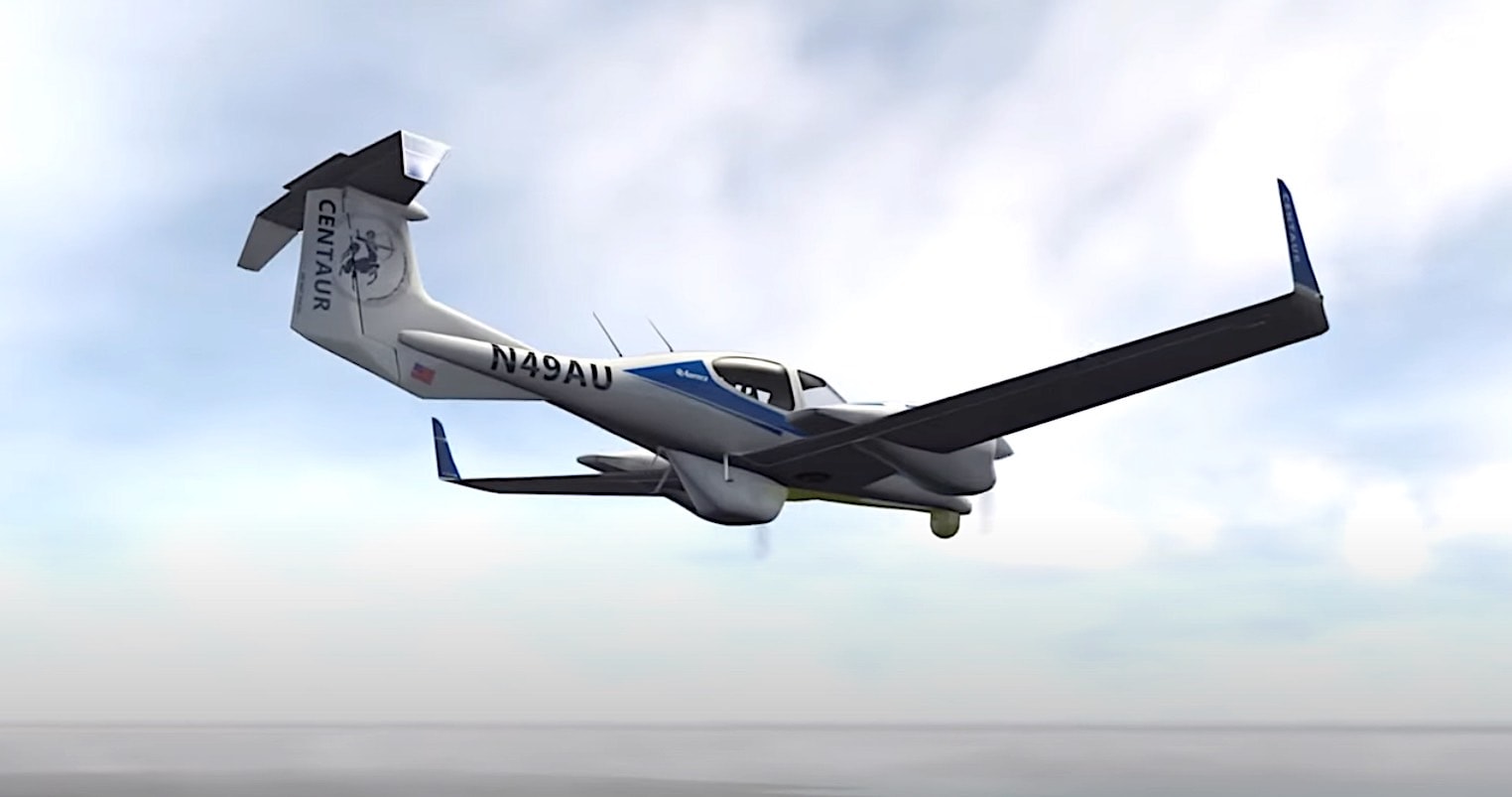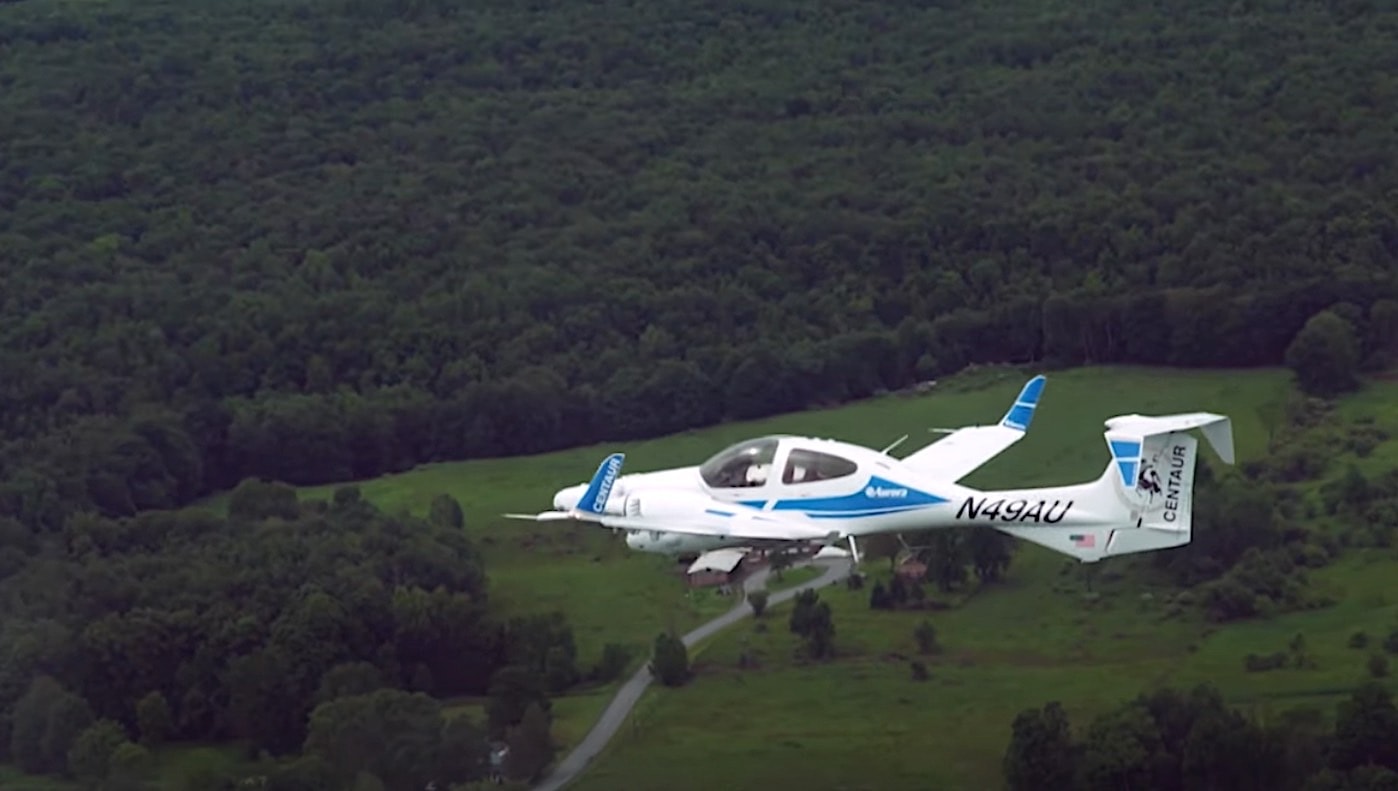The Optionally Piloted Aircraft (OPA) concept has been developed for dual operation, either by human pilots or remote control, akin to a drone.
Although few OPAs are in service today, research is accelerating toward broader adoption. Boeing’s Aurora Flight Sciences is a key player in this field, particularly with its Centaur project.
Based on the Diamond DA42, the Centaur is modified significantly for testing various technologies and training student pilots for uncrewed flight operations.
The standard DA42, known for being as easy to fly as a single-engine aircraft while offering the added safety of a second engine, can transport four people at speeds up to 227 mph (365 kph) and cover distances around 1,400 miles (2,250 km).

Aurora recently conducted a test flight with the Centaur in the National Airspace System (NAS). The flight, from Manassas, Virginia, to the Potomac River, was controlled from a ground station with a backup pilot on board to take over if necessary.
The primary goal was to test data link quality in adverse weather conditions at altitudes between 4,500 and 7,500 feet (1,370 to 2,280 meters). During the flight, the aircraft was controlled by two ground operators, with a third person in the cockpit ready to intervene if needed.
The Centaur’s mission included taking photos with an EO/IR camera and transmitting them back to the control station. Additionally, the aircraft was equipped with a maritime surveillance radar.

